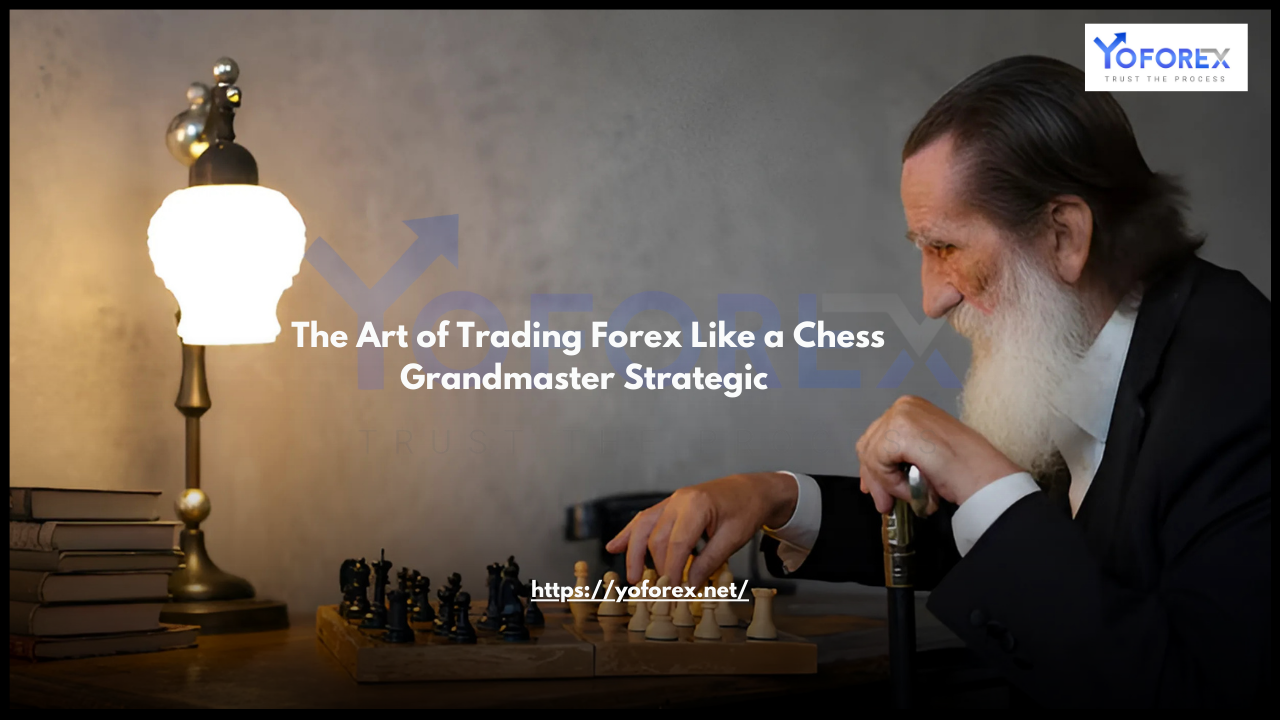Trading forex is often compared to playing chess—a game of intellect, patience, and strategic execution. Just like a chess grandmaster anticipates multiple moves ahead, a forex trader must develop a well-thought-out strategy to navigate the complex and dynamic market. In this article, we will explore the similarities between chess and forex trading, and how applying grandmaster-level thinking can give traders an edge.
Understanding the Chess-Forex Connection
Both chess and forex trading involve:
- Strategic Planning: Thinking ahead and formulating a game plan.
- Risk Management: Knowing when to sacrifice a piece (or capital) for greater gains.
- Adaptability: Adjusting strategies based on opponent moves (or market fluctuations).
- Emotional Control: Avoiding impulsive decisions and maintaining discipline.
- Pattern Recognition: Identifying common setups that indicate potential success or failure.
By mastering these elements, a trader can transform their approach from reactive to proactive.
1. Opening Strategy: The Foundation of Success
A chess grandmaster begins a game with a well-practiced opening strategy, which sets the tone for the mid and endgame. Similarly, a forex trader should have a well-defined trading plan before entering the market.

Key Considerations for Your Opening Strategy:
- Choose a currency pair with good liquidity and volatility.
- Analyze historical price movements and economic news.
- Determine your risk-reward ratio before placing a trade.
- Set clear entry and exit points based on technical and fundamental analysis.
Example: A trader using a breakout strategy ensures they enter trades when the price moves beyond a significant support or resistance level, just like a chess player who controls the center of the board early in the game.
2. Tactical Moves: Adapting to the Market’s Play
In chess, players must adjust their tactics based on the opponent’s strategy. Forex traders face a similar challenge—markets are unpredictable, and one must adapt quickly.
Tactical Approaches in Forex:
- Trend Following: Identifying strong trends and entering positions that align with market direction.
- Counter-Trend Trading: Taking positions against prevailing trends when strong reversal signals appear.
- Breakout Strategies: Trading based on price breaking key levels of support or resistance.
- Scalping vs. Swing Trading: Choosing between quick small profits (scalping) or holding positions longer for larger gains (swing trading).
Like a chess master anticipating an opponent’s trap, a trader must predict and react to price action while managing risk.
3. Risk Management: Sacrifices and Stop Losses
A chess grandmaster understands when to sacrifice a piece for better positioning. In forex, managing risk is crucial for long-term success.
Key Risk Management Strategies:
- Use Stop-Loss Orders: Just as a chess player safeguards their king, traders must protect their capital with stop-loss orders to limit losses.
- Position Sizing: Never risk more than a set percentage (e.g., 1-2%) of your trading capital on a single trade.
- Diversification: Trading different currency pairs or employing varied strategies to reduce exposure.
- Avoiding Overleveraging: Using excessive leverage can magnify losses and lead to emotional trading.
Effective risk management ensures a trader can survive losing streaks and capitalize on winning opportunities.
4. Pattern Recognition: Seeing the Bigger Picture
Just as a chess grandmaster recognizes patterns in opponent moves, successful forex traders identify price patterns and market trends.
Common Trading Patterns:
- Head and Shoulders: Signals trend reversals.
- Double Tops and Bottoms: Indicates potential trend shifts.
- Candlestick Formations: Patterns like Doji, Hammer, and Engulfing candles help forecast price movements.
- Moving Averages and Fibonacci Levels: Assist in identifying support and resistance zones.
A trader with pattern recognition skills can anticipate future price movements, just like a grandmaster predicts an opponent’s strategy.
5. Psychological Mastery: The Mindset of a Grandmaster Trader
Chess and forex trading both require immense psychological discipline. Emotional control often separates successful traders from those who fail.
How to Develop a Winning Mindset:
- Patience: Avoid jumping into trades without clear confirmation.
- Discipline: Stick to your trading plan without deviating impulsively.
- Handling Losses: Every trader experiences losses—learning from them is key.
- Confidence Without Overconfidence: Trust your analysis but avoid reckless trading.
- Continuous Learning: Just like chess masters study new strategies, traders should constantly refine their knowledge.
The ability to remain calm and analytical in high-pressure situations is what distinguishes an elite trader.
6. The Endgame: Knowing When to Exit
A grandmaster always has an endgame strategy, knowing when to push for a checkmate or secure a draw. Similarly, forex traders must have an exit strategy to maximize gains and minimize losses.
Effective Exit Strategies:
- Take-Profit Orders: Set predefined profit targets to exit at optimal levels.
- Trailing Stops: Lock in profits by adjusting stop-loss levels as the trade moves in your favor.
- Reversal Signals: If the market shows signs of reversal, consider exiting early.
- Fundamental News Impact: Unexpected events (e.g., central bank announcements) can drastically shift market direction—know when to step out.
Without a solid exit strategy, even a well-planned trade can turn into a losing one.

